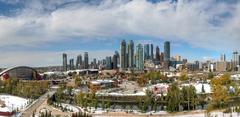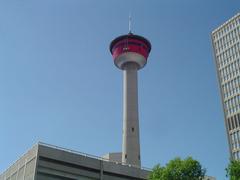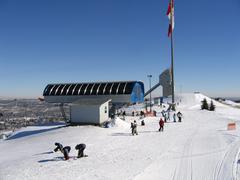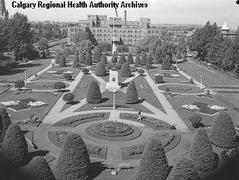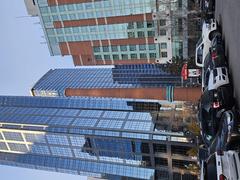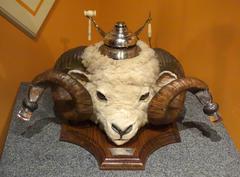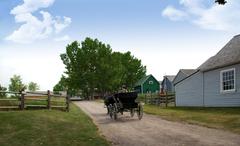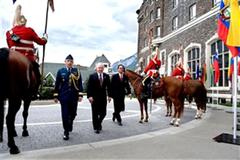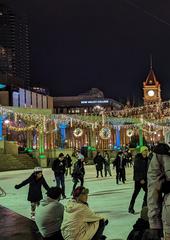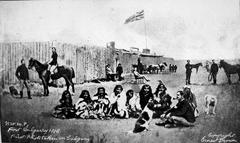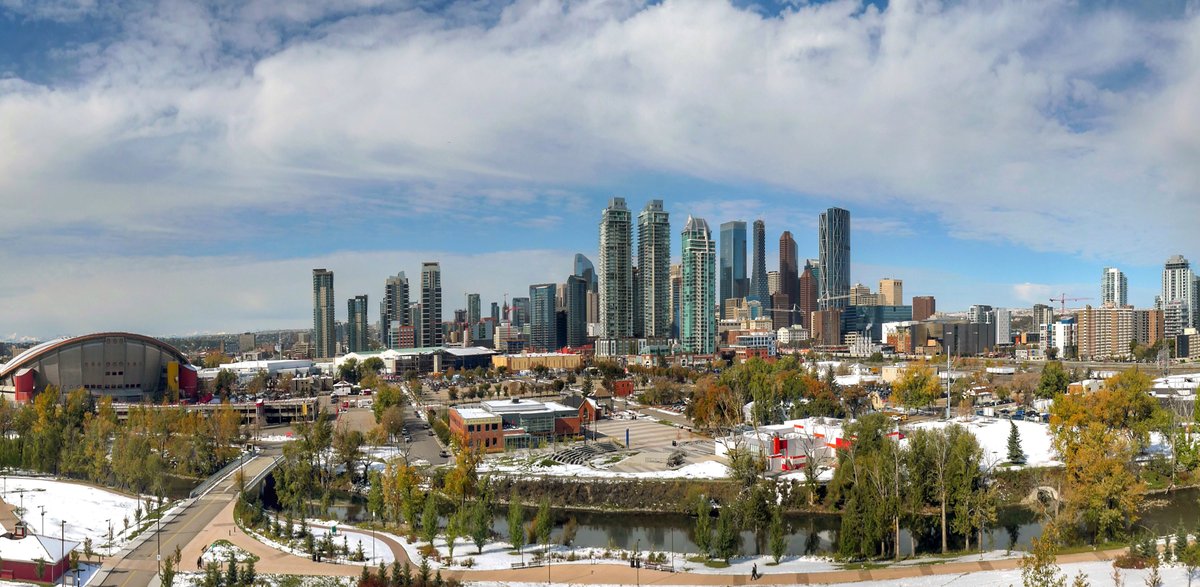
Scotsman’s Hill Calgary: Visiting Hours, Tickets, and Historical Sites Guide
Date: 14/06/2025
Introduction
Scotsman’s Hill, perched in Calgary’s historic Ramsay neighborhood, is a landmark that seamlessly weaves together ancient geology, deep Indigenous roots, early settler history, and contemporary urban vibrancy. Renowned for its breathtaking panoramic views of the Bow and Elbow Rivers, downtown Calgary’s skyline, and the distant Rocky Mountains, Scotsman’s Hill is more than a picturesque lookout—it’s a living tapestry of stories, community, and heritage (REP Calgary Homes; Calgary Foundation PDF).
Open year-round with no entrance fees, Scotsman’s Hill invites visitors for hiking, photography, picnics, and iconic event viewing—especially during the Calgary Stampede. This guide covers all you need to know, from geology and Indigenous history to access, visitor tips, and nearby attractions.
Contents
- Introduction
- Geological Setting and Natural History
- Indigenous Significance
- Early Settler and Community History
- Visiting Scotsman’s Hill: Hours, Access, and Amenities
- Special Events and Stampede Fireworks
- Nearby Attractions and Complementary Experiences
- Practical Visitor Tips and FAQs
- Sustainability and Responsible Tourism
- Conclusion and Key Recommendations
- Sources
Geological Setting and Natural History
Location and Topography
Scotsman’s Hill is a prominent rise bordering the Ramsay and Inglewood neighborhoods, forming one of Calgary’s distinctive elevated viewpoints, alongside Nose Hill and Crescent Heights (REP Calgary Homes). Its vantage point is a result of ancient geological and glacial processes, providing both educational and scenic value.
Bedrock and Sedimentary Layers
The hill’s geology is defined by:
- Porcupine Hills Formation: River sands and floodplain mudstones deposited between 62.5–58.5 million years ago during the Rocky Mountains’ uplift (Calgary Foundation PDF, p. 1).
- High-Plains Boulder Gravel: Quartzite boulders deposited by pre-glacial braided rivers, shaping the hill’s composition (Calgary Foundation PDF, p. 4).
Glacial Influence
The Pleistocene glaciations, particularly the Laurentide Ice Sheet, covered Calgary with up to 1.5 km of ice about 22,000 years ago, sculpting the region’s topography. As glaciers retreated, Glacial Lake Calgary formed, leaving behind silts and clays that underlie Scotsman’s Hill’s slopes (Calgary Foundation PDF, p. 3). Boulder “erratics” originating from Jasper National Park dot the landscape, transported via glacial movement (Calgary Foundation PDF, pp. 4–5).
Vegetation and Wildlife
Despite urban encroachment, Scotsman’s Hill supports native prairie grasses (rough fescue, blue grama), wildflowers (prairie crocus), shrubs (wolf willow), and a variety of wildlife including songbirds, raptors (red-tailed hawks), jackrabbits, ground squirrels, coyotes, and pollinators (Wanderlog).
Indigenous Significance
Traditional Territory and Place Names
Scotsman’s Hill sits within the traditional lands of the Blackfoot Confederacy, Tsuut’ina, and Stoney Nakoda Nations, with the Blackfoot name for the area—Moh-kíns-tsis—meaning “elbow,” referencing the confluence of the Bow and Elbow Rivers (calgaryunitedway.org; mindfulecotourism.com). The hill’s escarpments and valleys are remnants of ancient meltwater channels that shaped Indigenous seasonal movement and gathering (mycalgary.com).
Ecological and Cultural Importance
Before European settlement, the slopes hosted rich fescue grasslands supporting bison herds, making the area a vital hunting and gathering ground. The Old North Trail, an ancient trade route, passed nearby, facilitating interregional exchange (mycalgary.com; heritageinspiresyyc.org). While there is no specific recorded Indigenous name for Scotsman’s Hill, its prominence in the landscape underscores its historical and cultural significance.
Early Settler and Community History
From Fraser’s Hill to Scotsman’s Hill
European settlement began in 1875 with Fort Calgary, marking a shift in land use and ownership (mindfulecotourism.com). The hill was initially called Fraser’s Hill after Angus Fraser, a Scottish Hudson’s Bay Company storeman, and later “Scotsman’s Hill” after the influx of Scottish railway and industrial workers (mycalgary.com).
Industrial and Community Development
The Ramsay neighborhood grew as one of Calgary’s oldest communities, with Spiller Road tracing a former Indigenous trail (heritageinspiresyyc.org). The Elbow River quarry, operated by John G. McCallum from 1894, supplied sandstone for many of Calgary’s historic buildings (mycalgary.com). By the 1940s, the hill was a popular residential and recreational spot, especially for railway workers.
Visiting Scotsman’s Hill: Hours, Access, and Amenities
Visiting Hours and Tickets
- Open: Year-round, 24 hours a day.
- Admission: Free; no tickets required.
Getting There
- Location: Ramsay neighborhood, southeast Calgary; primary access via Salisbury Street SE.
- Public Transit: Calgary Transit buses serve the area; Ramsay/Inglewood LRT (future).
- Parking: Limited street parking; consider walking, cycling, or rideshare, especially during major events (Stephi Mi Calgary Guide).
- Accessibility: Paved pathways and gentle slopes; some uneven areas. Generally accessible for strollers and wheelchairs, but certain paths are moderately steep (Calgary Local Area Plan).
Amenities
- Facilities: Benches, viewing platform; no public restrooms or food vendors.
- Nearby Services: Restaurants, shops, and amenities in Ramsay and Inglewood within a short walk.
Special Events and Stampede Fireworks
Calgary Stampede
Each July, Scotsman’s Hill becomes the city’s most popular public viewing area for the Calgary Stampede’s nightly fireworks (Calgary Reviews). During Stampede week, vehicular access is restricted; visitors must walk or cycle up the hill. Arrive early to secure a good vantage point, especially for the fireworks or city celebrations.
Other Events
Scotsman’s Hill also offers prime views for Canada Day fireworks and other city events. Check the City of Calgary for event-specific updates and any temporary restrictions (Calgary Local Area Plan).
Nearby Attractions and Complementary Experiences
- Stampede Park: Home to the Calgary Stampede, concerts, and sporting events.
- Inglewood: Calgary’s oldest neighborhood with boutiques, cafes, and live music (Stephi Mi Calgary Guide).
- Bow River Pathway: Connects Scotsman’s Hill to downtown and other parks.
- Fort Calgary: Historic site at the confluence of Bow and Elbow Rivers.
- Ramsay Community: Features public art, eateries, and heritage buildings (heritageinspiresyyc.org).
Practical Visitor Tips and FAQs
Best Times to Visit
- Sunrise/Sunset (Golden Hour): Stunning light for photography.
- Stampede Fireworks: Arrive at least an hour early during Stampede week.
- Year-Round: Open access, but dress for Calgary’s changeable weather (Fab5 Family Travel).
What to Bring
- Weather-appropriate clothing (layers/rain jacket in June)
- Camera or binoculars
- Snack and water (no vendors on-site)
- Blanket or portable chair
Safety and Etiquette
- Respect residential neighbors: minimize noise, dispose of litter, don’t block driveways.
- Pets welcome, on leash; clean up after animals.
- Stay on marked paths; be cautious after dark.
Frequently Asked Questions
Q: Is there an entry fee or ticket requirement?
A: No, Scotsman’s Hill is free and open to the public year-round.
Q: Are there public restrooms or food vendors?
A: No; nearest amenities are in Ramsay or Inglewood.
Q: Is the hill wheelchair accessible?
A: Generally yes, via paved paths, though some areas are uneven or moderately steep.
Q: Are guided tours available?
A: Local heritage and community groups occasionally offer guided walks. Check Heritage Inspires YYC for updates.
Q: Can I bring my dog?
A: Yes, but dogs must be leashed.
Sustainability and Responsible Tourism
- Follow Leave No Trace principles: pack out all trash, minimize noise, and respect wildlife.
- Support local businesses in Ramsay and Inglewood.
- Use sustainable transport options where possible.
Conclusion and Key Recommendations
Scotsman’s Hill is a Calgary gem, blending ancient geology, Indigenous legacy, urban history, and spectacular cityscapes. Easily accessible and free to visit, it’s ideal for sightseeing, photography, and community events like the Calgary Stampede fireworks. For an enriched experience, explore nearby neighborhoods, support local businesses, and consider downloading the Audiala app for self-guided tours and up-to-date event information.
Plan your visit today to witness Calgary’s skyline, connect with the land’s layered stories, and celebrate community spirit from one of the city’s most beloved vantage points.
Sources
- REP Calgary Homes – Scotsman’s Hill
- Calgary Foundation PDF: The Scenic Geology of Calgary
- Wanderlog: Best Views and Scenic Lookouts in Calgary
- Calgary United Way – Indigenous Landscape
- Mindful Ecotourism – Indigenous History
- MyCalgary – Historic Scotsman’s Hill
- Heritage Inspires YYC – Ramsay Community
- Calgary Reviews – Top City Views
- Fab5 Family Travel – Calgary in June
- Stephi Mi Calgary Travel Guide
- City of Calgary Local Area Plan
